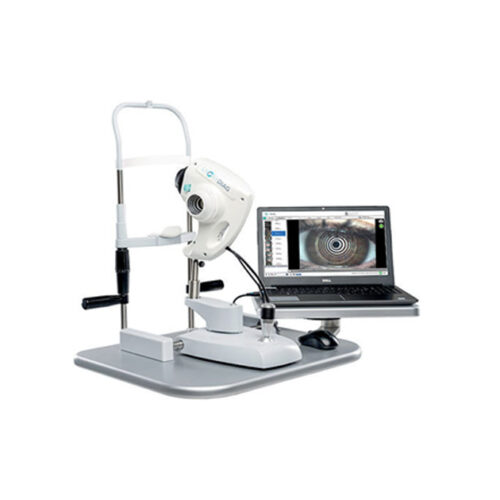Diabetes mellitus is a chronic problem that influences millions of people worldwide. It is identified by high blood glucose degrees that can result in different complications if not effectively taken care of. While there are various sorts of diabetic issues, the most common ones are type 1 and kind 2. Understanding the differences between both is vital for reliable management and also therapy. In this article, we will certainly look into the subtleties of type 1 and also kind 2 diabetic issues, highlighting their distinctive features and administration strategies.
Kind 1 Diabetes: The Immune-Mediated Condition
Type 1 diabetes mellitus, also referred to as insulin-dependent diabetes or juvenile-onset diabetic issues, is an autoimmune condition libidex. It happens when the body’s body immune system incorrectly strikes and also ruins the insulin-producing cells in the pancreas. Insulin is a hormonal agent in charge of controling blood sugar level levels by helping with the uptake of glucose into cells.
People with kind 1 diabetes mellitus generate little to no insulin, resulting in a buildup of glucose in the blood stream. This results in hyperglycemia, which can have harmful results on different organs and systems in the body.
Symptoms and signs of kind 1 diabetes mellitus normally establish rapidly and might include constant urination, too much thirst, unintentional weight-loss, fatigue, and obscured vision. If left without treatment, it can proceed to diabetic ketoacidosis (DKA), a life-threatening problem defined by high levels of ketones in the blood.
Handling type 1 diabetes calls for lifelong insulin therapy. This involves regular insulin shots or using an insulin pump to supply the body with the essential insulin it does not have. Furthermore, individuals with type 1 diabetes mellitus have to carefully monitor their blood sugar level levels, take on a healthy and balanced diet regimen, take part in routine physical activity, as well as obtain regular examinations to prevent or handle problems.
Type 2 Diabetes Mellitus: The Lifestyle-Related Condition
Kind 2 diabetes mellitus, likewise known as non-insulin-dependent diabetes mellitus or adult-onset diabetes, is the most common type of diabetes. Unlike kind 1 diabetes mellitus, kind 2 is primarily characterized by insulin resistance. Insulin resistance occurs when the body’s cells end up being less responsive to the results of insulin, resulting in higher blood sugar level degrees.
While genetics play a role in the development of type 2 diabetes mellitus, lifestyle factors such as inadequate diet, inactive way of life, weight problems, as well as age are considerable factors. In addition, people from specific ethnic backgrounds, such as African, Hispanic, or Asian descent, go to a greater danger of developing type 2 diabetes mellitus.
Unlike type 1 diabetes, signs and symptoms of type 2 diabetic issues may develop progressively, making very early discovery testing. Usual signs include frequent peeing, boosted thirst, fatigue, slow-healing injuries, as well as frequent infections.
Originally, type 2 diabetic issues can often be handled with way of living adjustments such as a healthy diet plan, routine exercise, and also weight loss. However, as the condition progresses, dental medications and, in some cases, insulin treatment might be essential to keep blood sugar level levels within a target range.
It is important to keep in mind that type 2 diabetes is a chronic artralon problem without a treatment. However, with proper management, individuals with kind 2 diabetic issues can lead a meeting as well as healthy life.
Differences At a Look
To summarize the variances between type 1 as well as kind 2 diabetes mellitus:
- Kind 1 diabetic issues is an autoimmune problem, while type 2 diabetes mellitus is mostly linked to lifestyle aspects.
- Type 1 diabetic issues typically establishes in childhood years or adolescence, whereas type 2 diabetes is much more commonly detected in adulthood.
- Kind 1 diabetes requires long-lasting insulin treatment, whereas type 2 diabetes mellitus may originally be managed through lifestyle adjustments.
- Kind 1 diabetes shows rapid symptom beginning, while kind 2 diabetes mellitus signs and symptoms might create slowly.
Verdict
Kind 1 and also kind 2 diabetes stand out yet common forms of diabetes mellitus, each with its very own characteristics as well as management strategies. Type 1 diabetes mellitus is an autoimmune condition that calls for lifelong insulin therapy, while type 2 diabetes is largely lifestyle-related and also can frequently be taken care of with lifestyle adjustments. Understanding the differences in between these 2 kinds of diabetes is crucial for individuals coping with the condition, along with their families as well as healthcare providers. With appropriate education and learning, awareness, as well as monitoring strategies, individuals with diabetes mellitus can properly control their blood sugar level degrees, avoid issues, and lead fulfilling lives.



